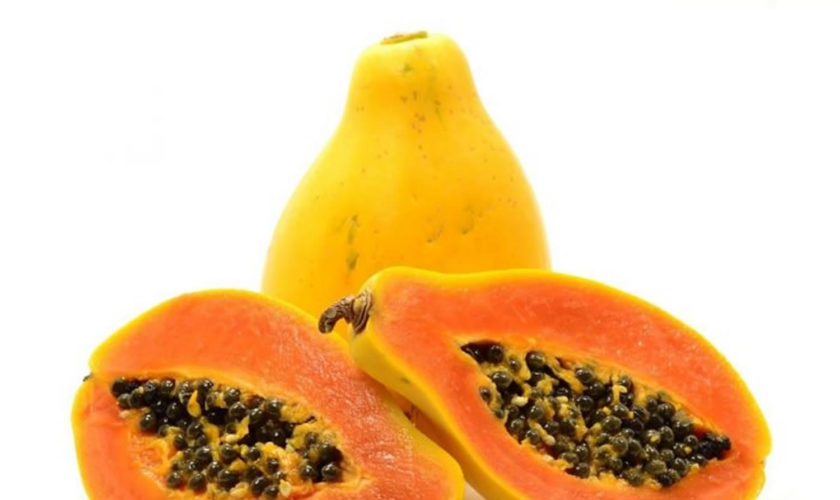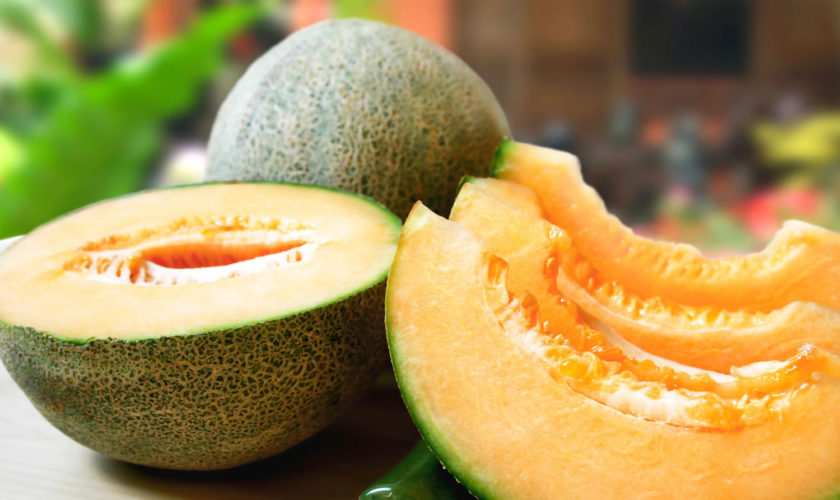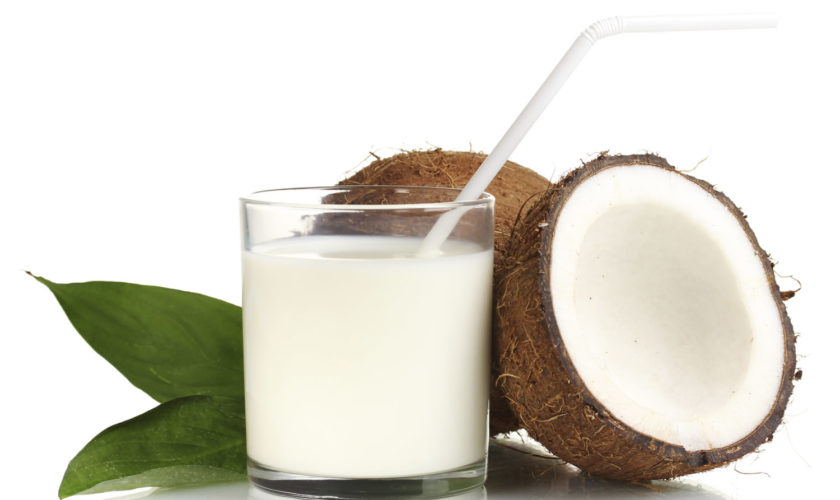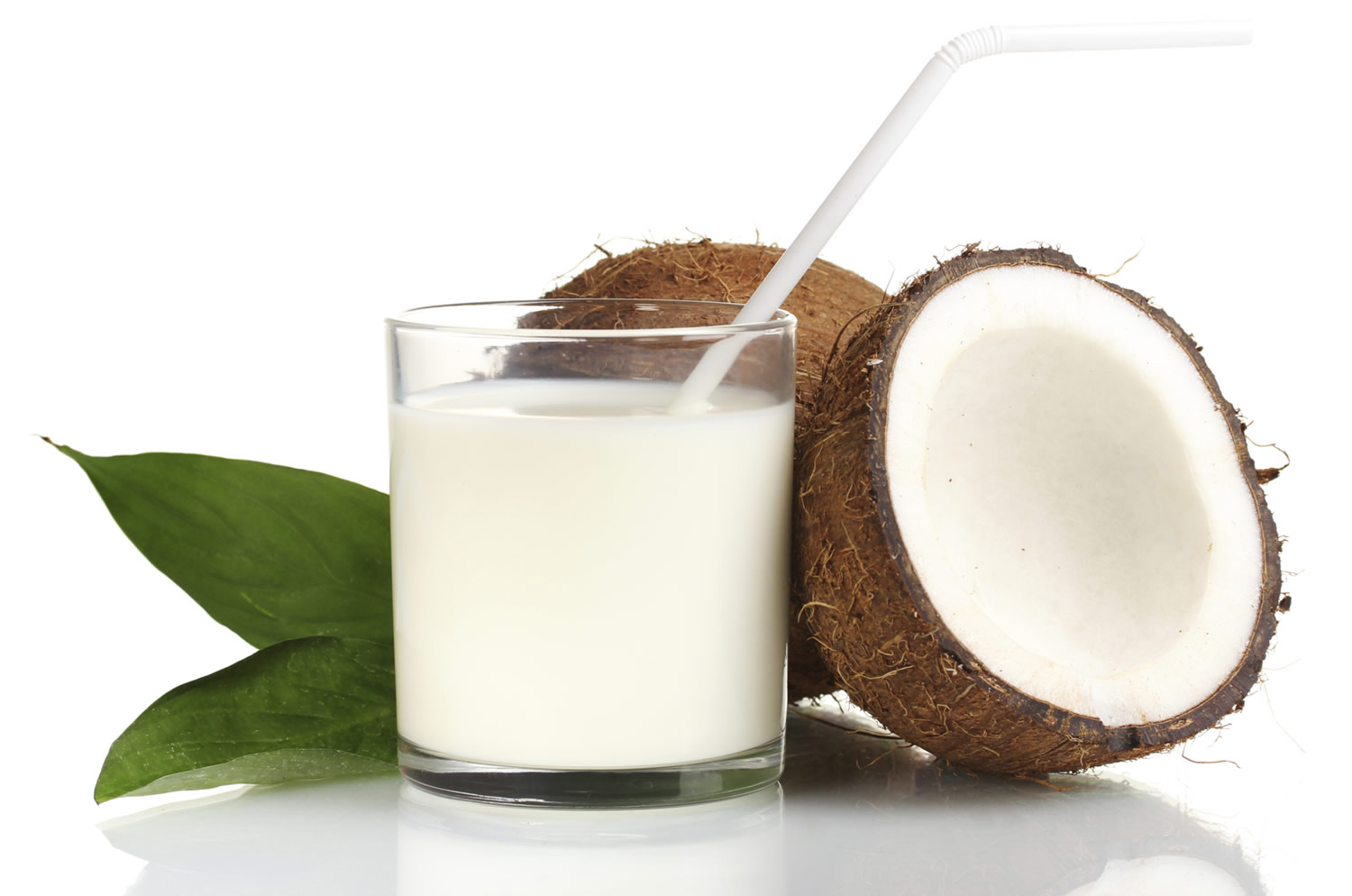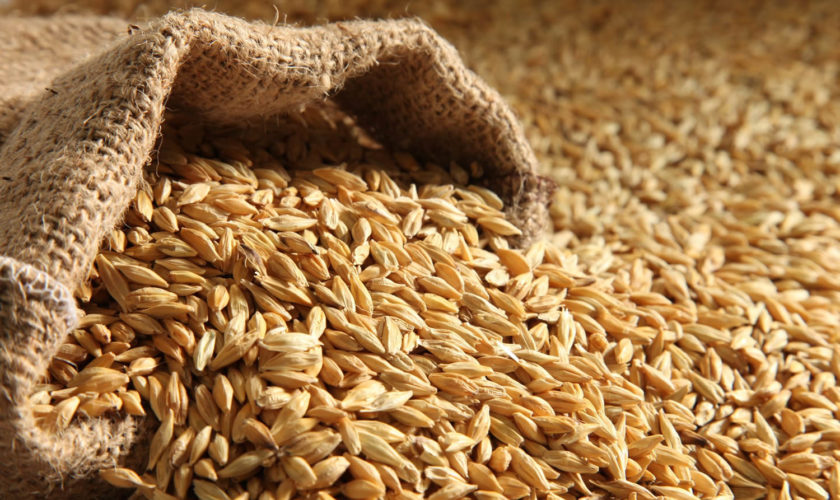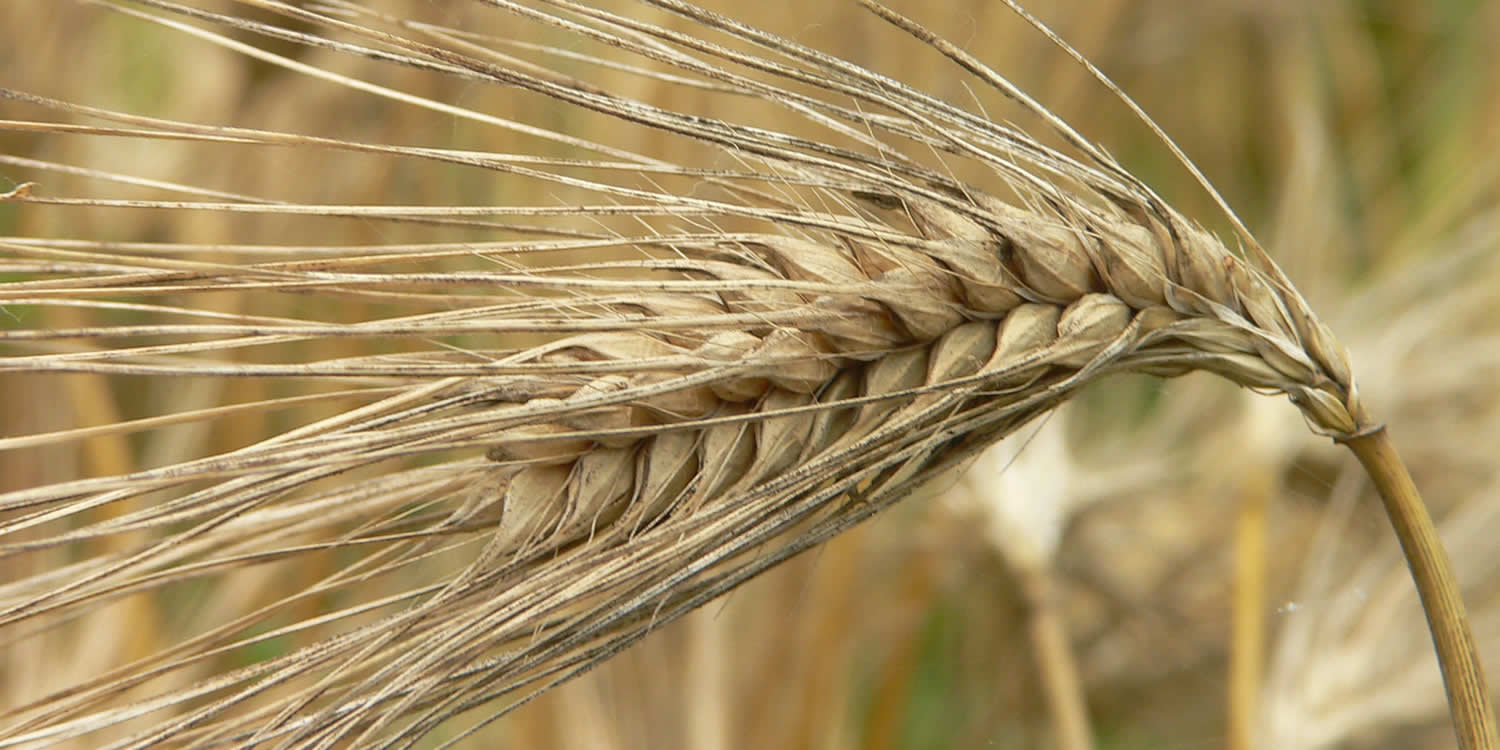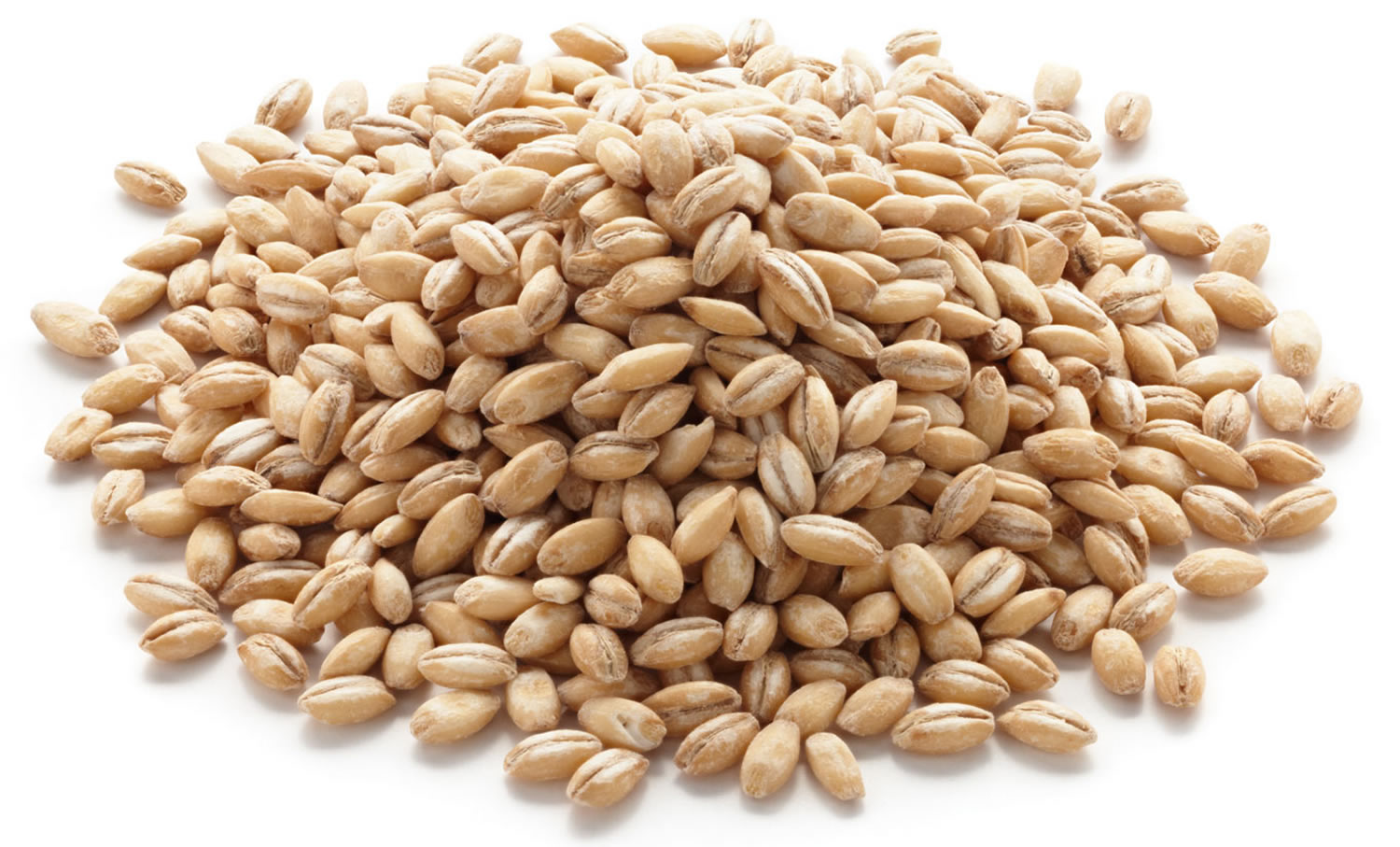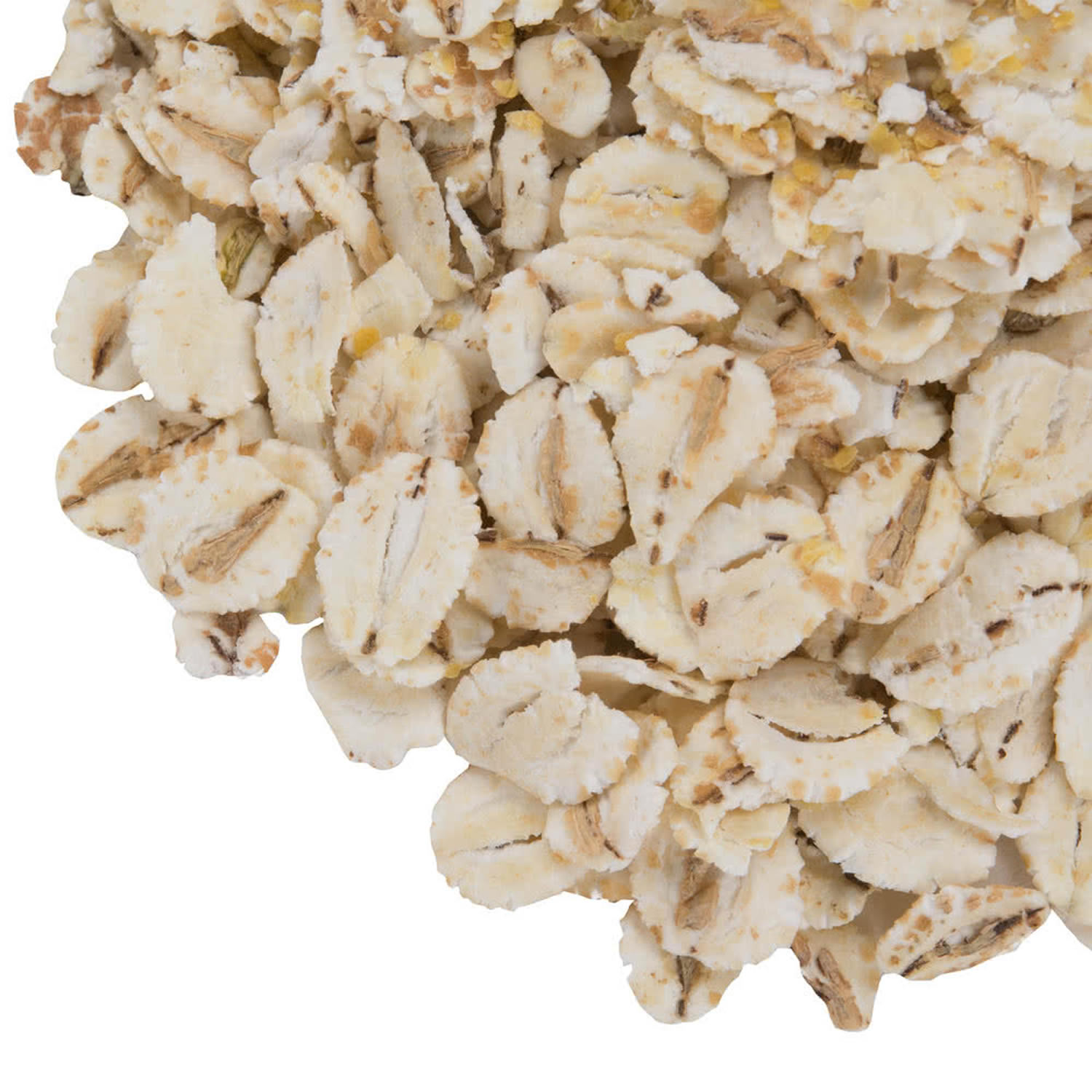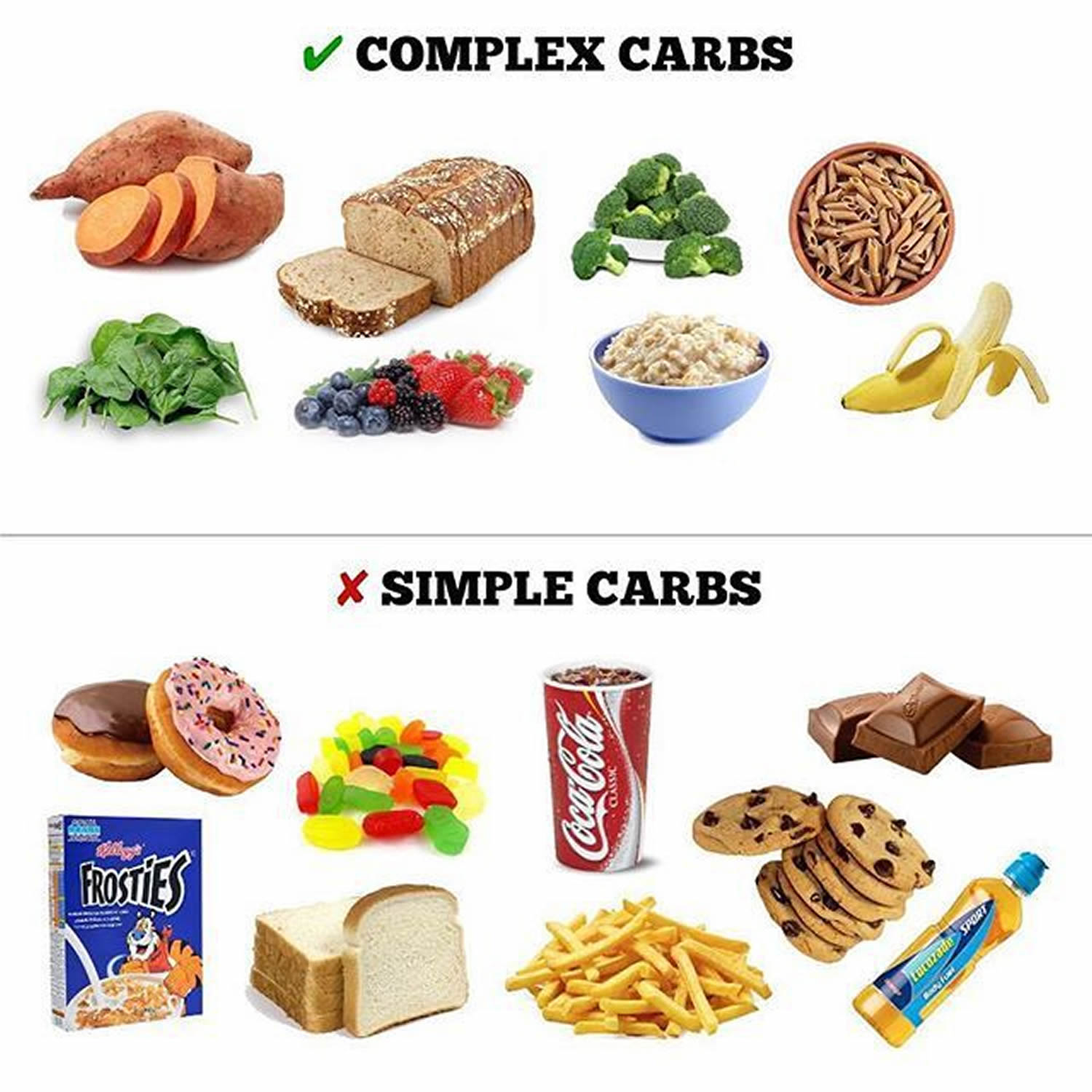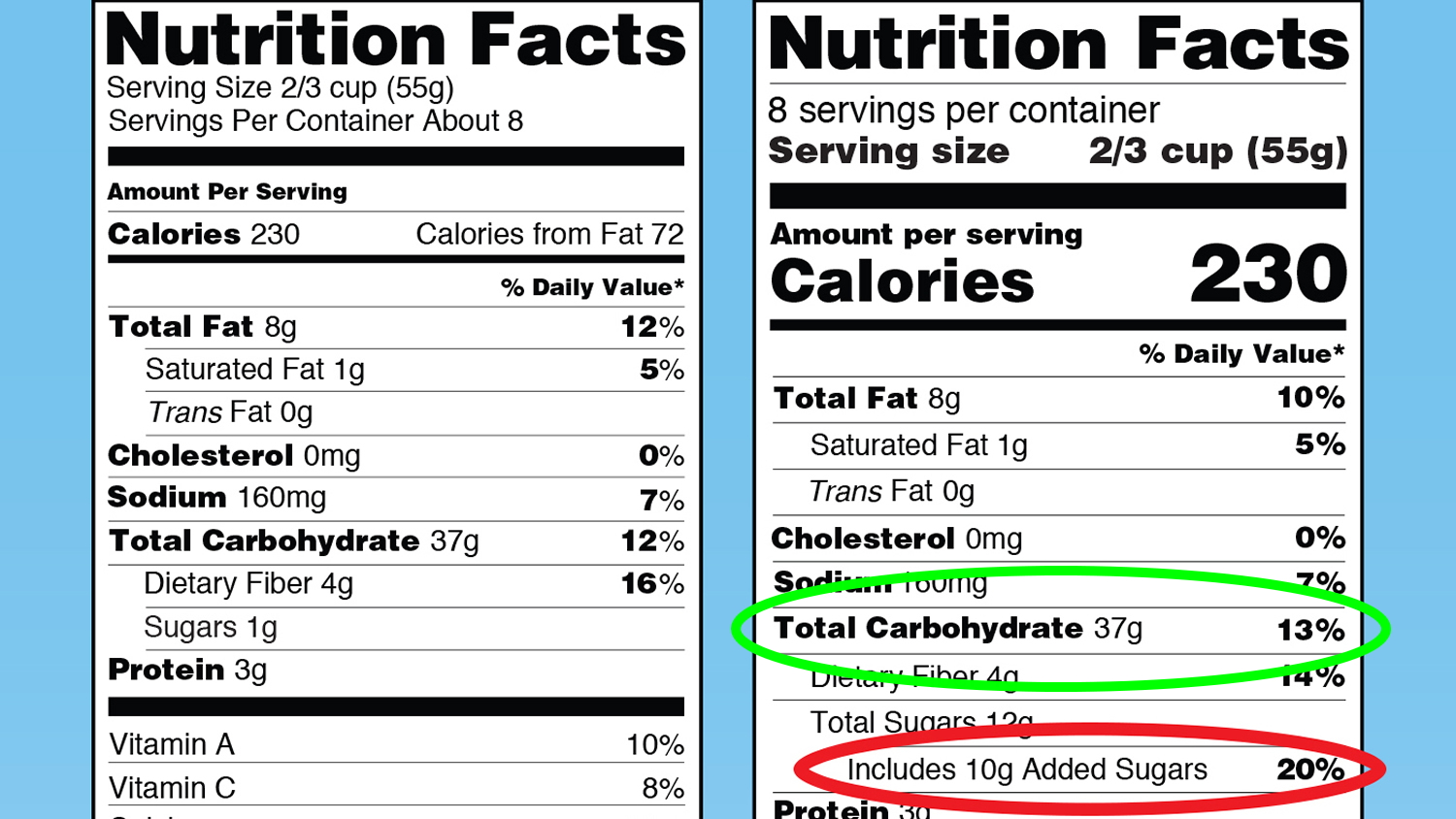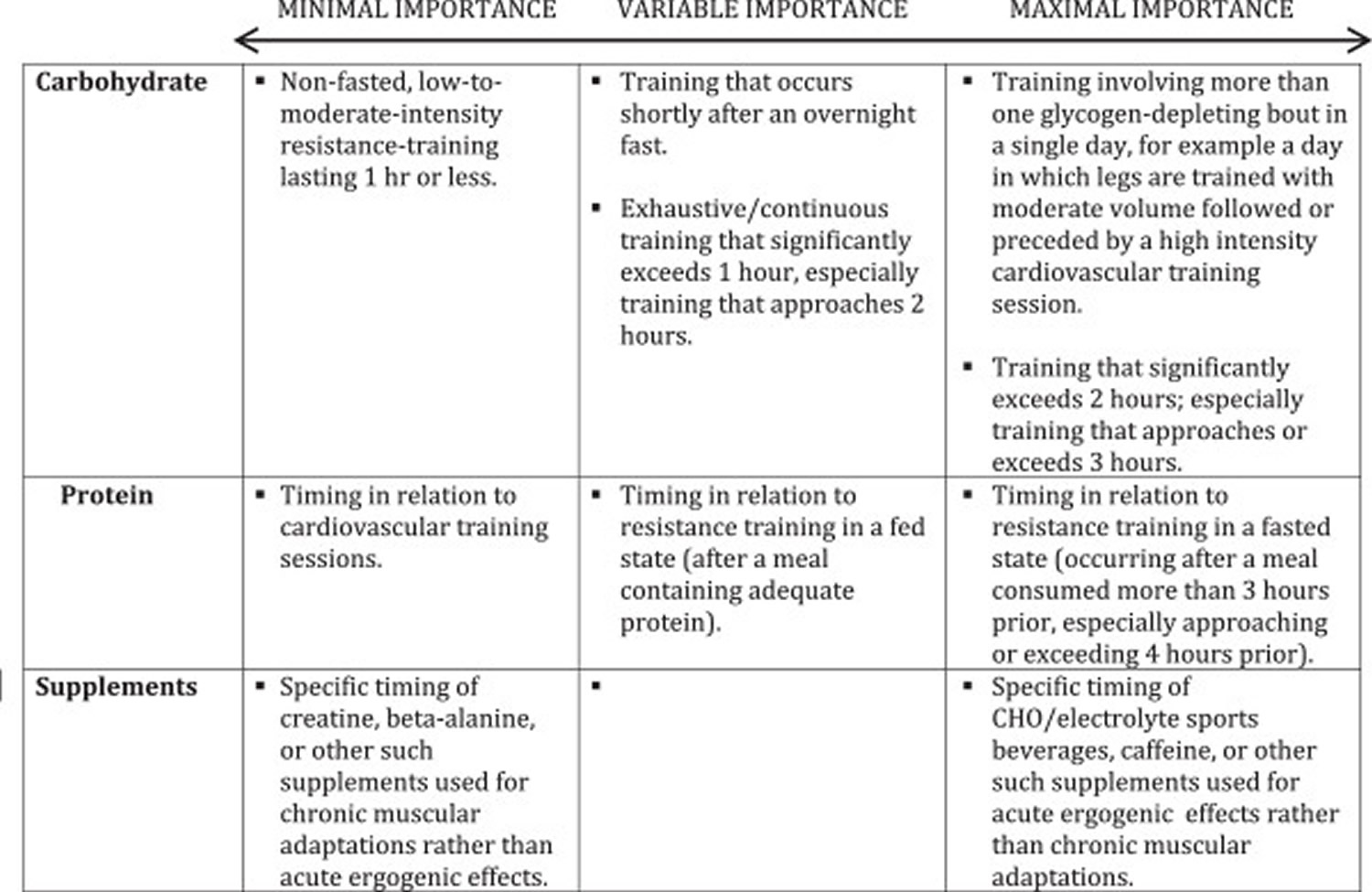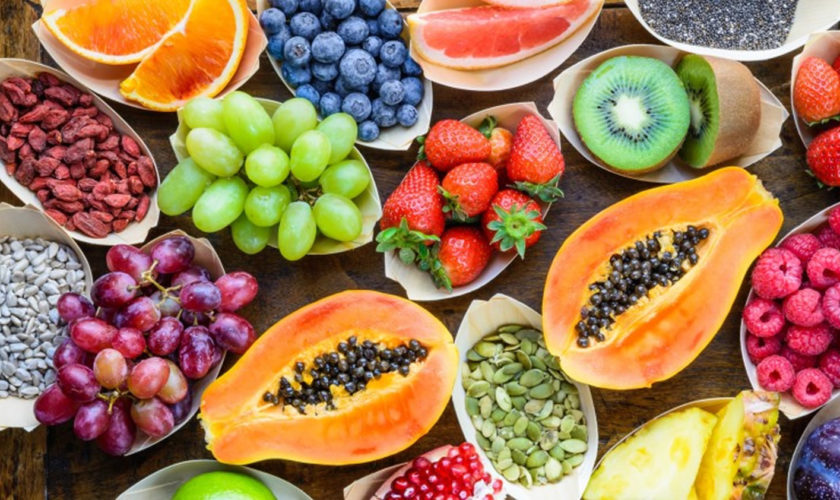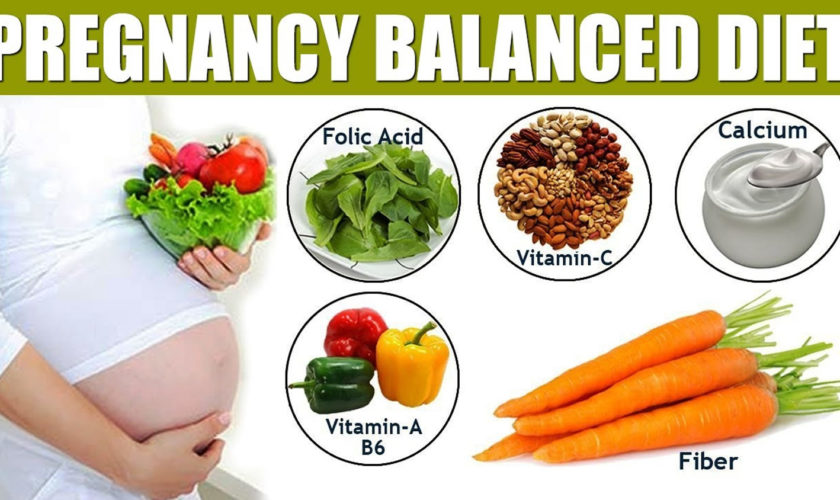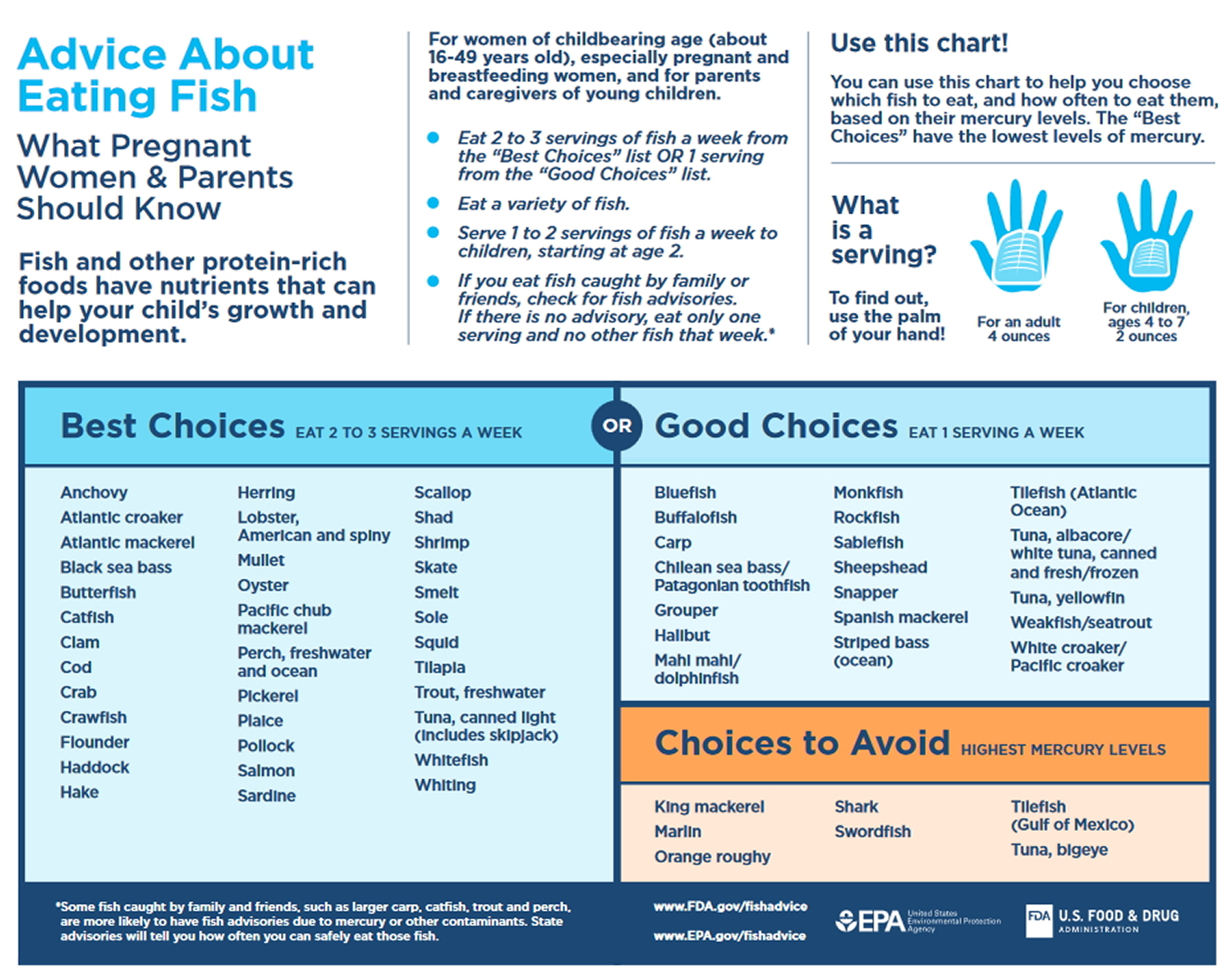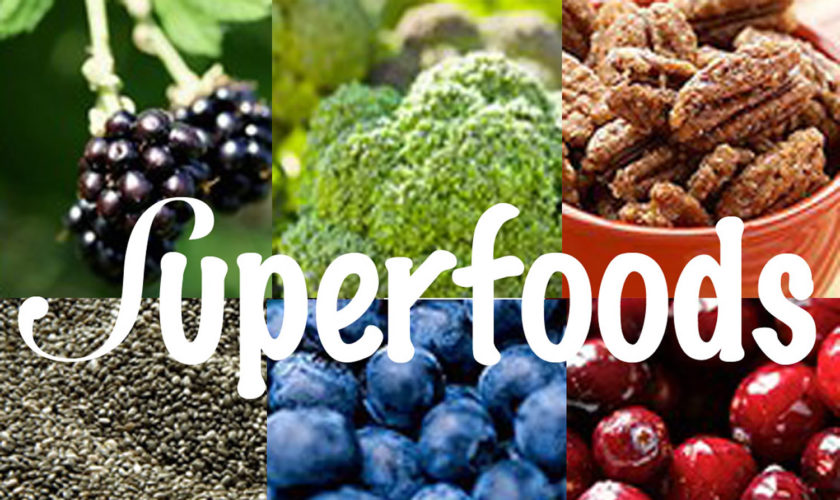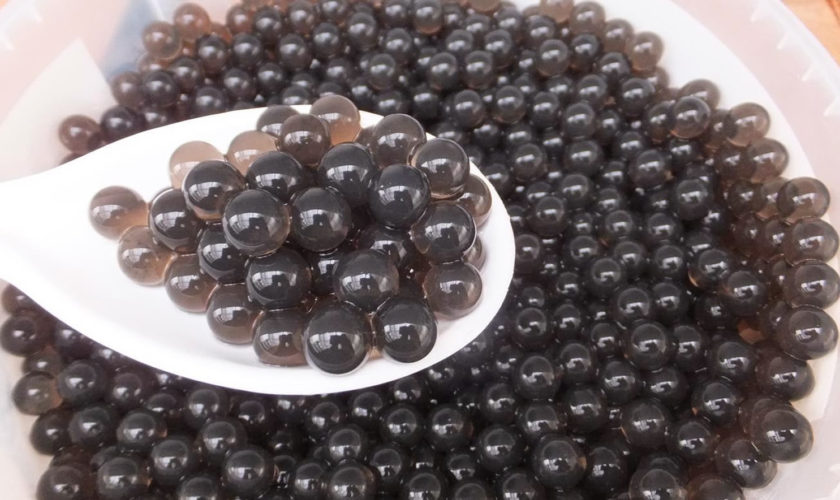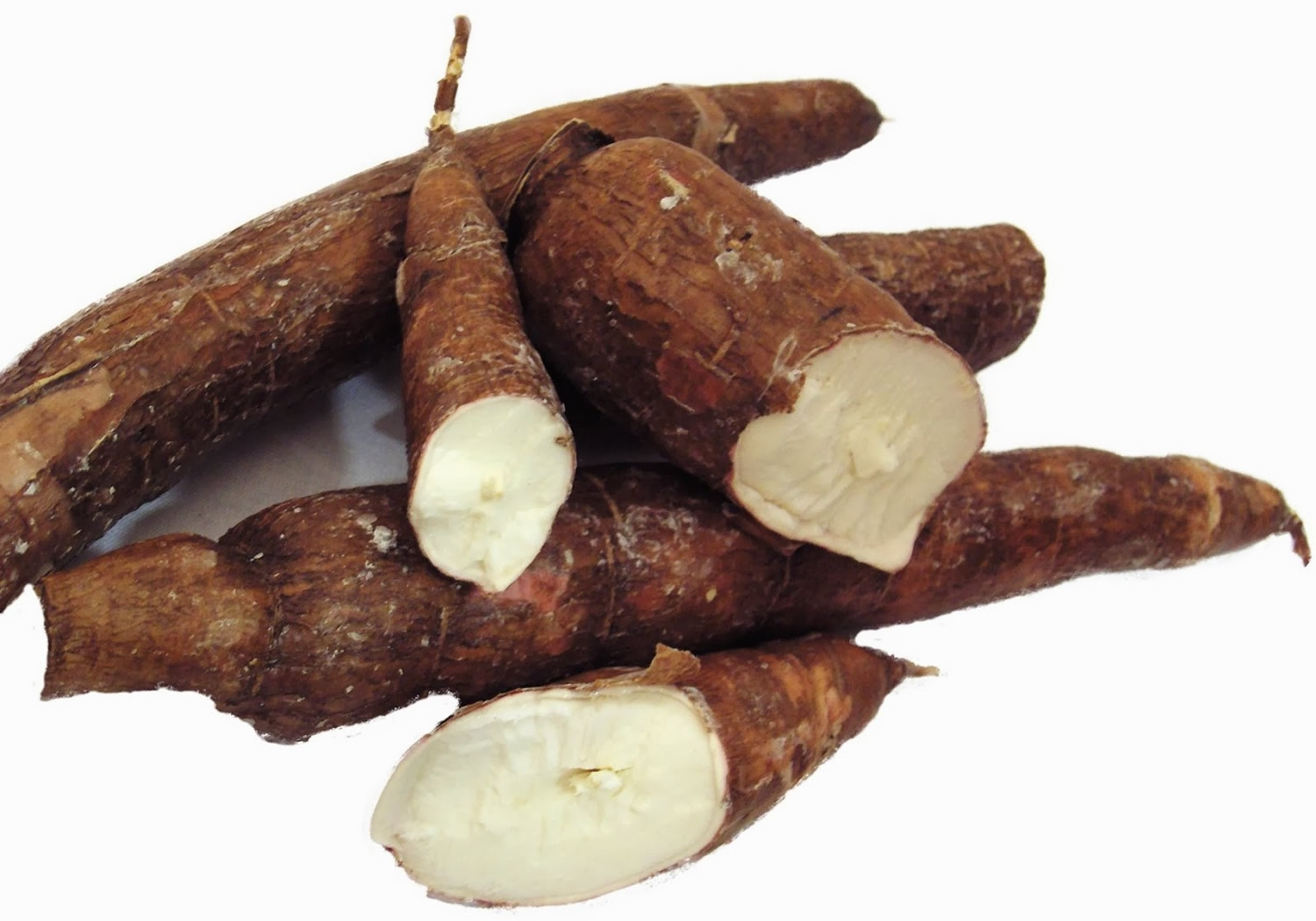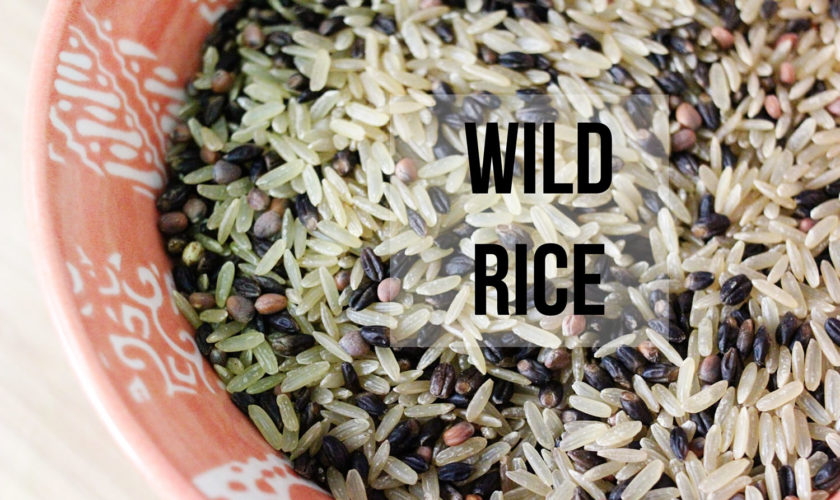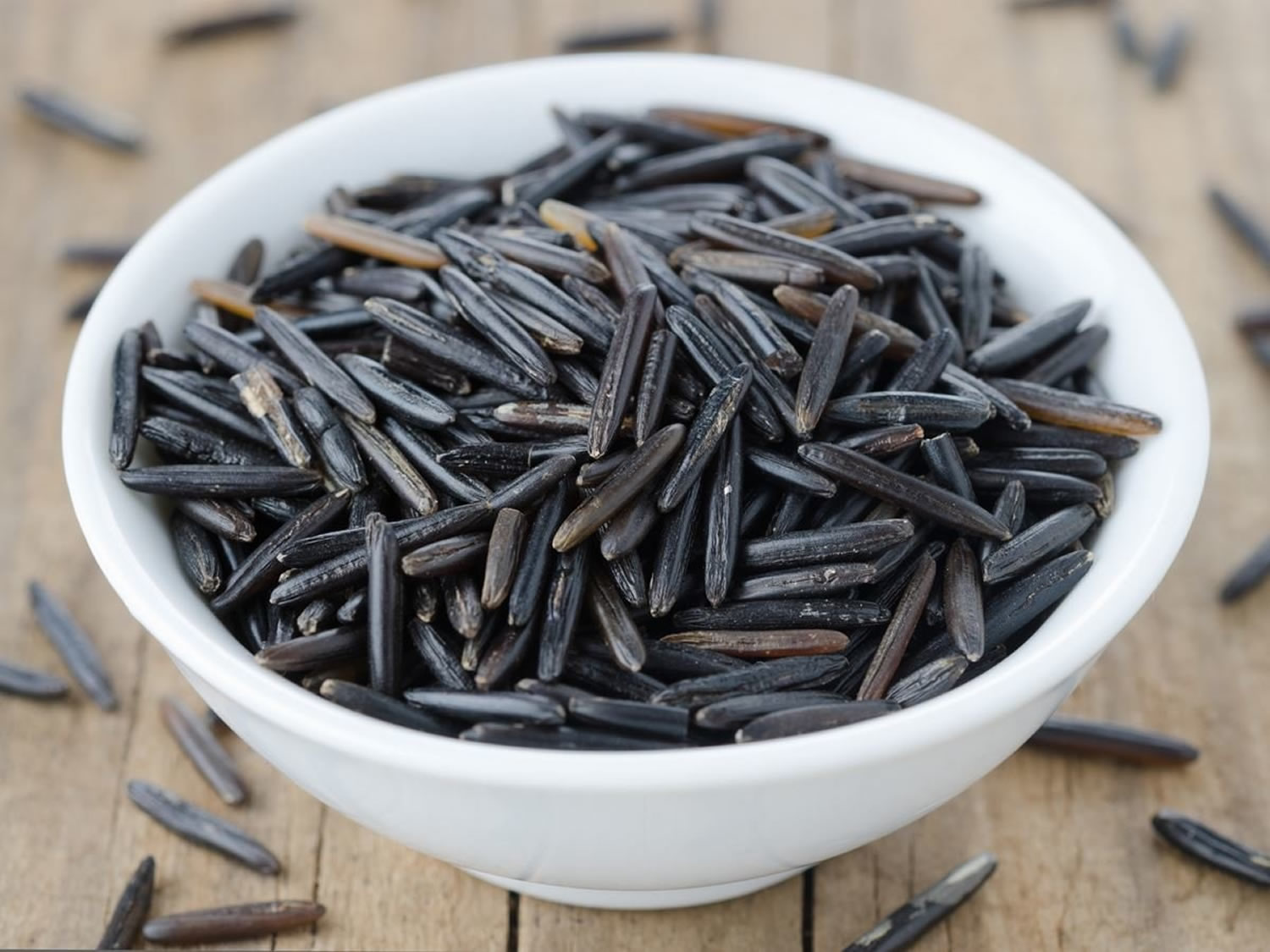What is papaya
The papaya (Carica papaya L.) also called papaw or pawpaw, is a tropical fruit tree, one of the 22 accepted species in the genus Carica of the family Caricaceae 1. Its origin is in the tropics of the Americas, perhaps from southern Mexico and neighboring Central America.
Commonly and erroneously referred to as a “tree”, the papaya plant is properly a large herb growing at the rate of 6 to 10 ft (1.8-3 m) the first year and reaching 20 or even 30 ft (6-9 m) in height, with a hollow green or deep-purple stem becoming 12 to 16 in (30-40 cm) or more thick at the base and roughened by leaf scars. The leaves emerge directly from the upper part of the stem in a spiral on nearly horizontal petioles 1 to 3 1/2 ft (30-105 cm) long, hollow, succulent, green or more or less dark purple. The blade, deeply divided into 5 to 9 main segments, each irregularly subdivided, varies from 1 to 2 ft (30-60 cm) in width and has prominent yellowish ribs and veins. The life of a leaf is 4 to 6 months. Both the stem and leaves contain copious white milky latex.
Generally, the papaya fruit is melon-like, oval to nearly round, somewhat pyriform, or elongated club-shaped, 6 to 20 in (15-50 cm) long and 4 to 8 in (10-20 cm) thick; weighing up to 20 lbs (9 kg). Semi-wild (naturalized) plants bear miniature fruits 1 to 6 in (2.5-15 cm) long. The skin is waxy and thin but fairly tough. When the fruit is green and hard it is rich in white latex. As it ripens, it becomes light- or deep-yellow externally and the thick wall of succulent flesh becomes aromatic, yellow, orange or various shades of salmon or red. It is then juicy, sweetish and somewhat like a cantaloupe in flavor; in some types quite musky. Attached lightly to the wall by soft, white, fibrous tissue, are usually numerous small, black, ovoid, corrugated, peppery seeds about 3/16 in (5 mm) long, each coated with a transparent, gelatinous aril.
Figure 1. Papaya fruit
How to eat papaya
Ripe papayas are most commonly eaten fresh, merely peeled, seeded, cut in wedges and served with a half or quarter of lime or lemon. Sometimes a few seeds are left attached for those who enjoy their peppery flavor but not many should be eaten. The flesh is often cubed or shaped into balls and served in fruit salad or fruit cup. Firm-ripe papaya may be seasoned and baked for consumption as a vegetable. Ripe flesh is commonly made into sauce for shortcake or ice cream sundaes, or is added to ice cream just before freezing; or is cooked in pie, pickled, or preserved as marmalade or jam. Papaya and pineapple cubes, covered with sugar sirup, may be quick-frozen for later serving as dessert. Half-ripe fruits are sliced and crystallized as a sweetmeat.
Papaya juice and nectar may be prepared from peeled or unpeeled fruit and are sold fresh in bottles or canned. In Hawaii, papayas are reduced to puree with sucrose added to retard gelling and the puree is frozen for later use locally or in mainland USA in fruit juice blending or for making jam.
Unripe papaya is never eaten raw because of its latex content. [Raw green papaya is frequently used in Thai and Vietnamese cooking.] Even for use in salads, it must first be peeled, seeded, and boiled until tender, then chilled. Green papaya is frequently boiled and served as a vegetable. Cubed green papaya is cooked in mixed vegetable soup. Green papaya is commonly canned in sugar sirup in Puerto Rico for local consumption and for export. Green papayas for canning in Queensland must be checked for nitrate levels. High nitrate content causes detinning of ordinary cans, and all papayas with over 30 ppm nitrate must be packed in cans lacquered on the inside. Australian growers are hopeful that the papaya can be bred for low nitrate uptake.
Young leaves are cooked and eaten like spinach in the East Indies. Mature leaves are bitter and must be boiled with a change of water to eliminate much of the bitterness. Papaya leaves contain the bitter alkaloids, carpaine and pseudocarpaine, which act on the heart and respiration like digitalis, but are destroyed by heat. In addition, two previously undiscovered major D1-piperideine alkaloids, dehydrocarpaine I and II, more potent than carpaine, were reported from the University of Hawaii in 1979. Sprays of male flowers are sold in Asian and Indonesian markets and in New Guinea for boiling with several changes of water to remove bitterness and then eating as a vegetable. In Indonesia, the flowers are sometimes candied. Young stems are cooked and served in Africa. Older stems, after peeling, are grated, the bitter juice squeezed out, and the mash mixed with sugar and salt.
In India, papaya seeds are sometimes found as an adulterant of whole black pepper. Collaborating chemists in Italy and Somalia identified 18 amino acids in papaya seeds, principally, in descending order of abundance, glutamic acid, arginine, proline, and aspartic acid in the endosperm; and proline, tyrosine, lysine, aspartic acid, and glutamic acid in the sarcotesta. A yellow to brown, faintly scented oil was extracted from the sundried, powdered seeds of unripe papayas at the Central Food Technological Research Institute, Mysore, India. White seeds yielded 16.1% and black seeds 26.8% and it was suggested that the oil might have edible and industrial uses.
Papaya nutrition facts
Raw papaya pulp contains 88% water, 11% carbohydrates, and negligible fat and protein. In a 100 gram amount, papaya fruit provides 43 kilocalories. The papaya is regarded as a fair source of iron and calcium; a good source of vitamins A, B and G and an excellent source of vitamin C (ascorbic acid) (75% of the Daily Value, DV) and a moderate source of folate (10% DV).
Table 1. Papaya (raw) nutrition facts
| Nutrient | Unit | Value per 100 g | |||||||||||||
| Approximates | |||||||||||||||
| Water | g | 88.06 | |||||||||||||
| Energy | kcal | 43 | |||||||||||||
| Energy | kJ | 179 | |||||||||||||
| Protein | g | 0.47 | |||||||||||||
| Total lipid (fat) | g | 0.26 | |||||||||||||
| Ash | g | 0.39 | |||||||||||||
| Carbohydrate, by difference | g | 10.82 | |||||||||||||
| Fiber, total dietary | g | 1.7 | |||||||||||||
| Sugars, total | g | 7.82 | |||||||||||||
| Sucrose | g | 0 | |||||||||||||
| Glucose (dextrose) | g | 4.09 | |||||||||||||
| Fructose | g | 3.73 | |||||||||||||
| Lactose | g | 0 | |||||||||||||
| Maltose | g | 0 | |||||||||||||
| Galactose | g | 0 | |||||||||||||
| Starch | g | 0 | |||||||||||||
| Minerals | |||||||||||||||
| Calcium, Ca | mg | 20 | |||||||||||||
| Iron, Fe | mg | 0.25 | |||||||||||||
| Magnesium, Mg | mg | 21 | |||||||||||||
| Phosphorus, P | mg | 10 | |||||||||||||
| Potassium, K | mg | 182 | |||||||||||||
| Sodium, Na | mg | 8 | |||||||||||||
| Zinc, Zn | mg | 0.08 | |||||||||||||
| Copper, Cu | mg | 0.045 | |||||||||||||
| Manganese, Mn | mg | 0.04 | |||||||||||||
| Selenium, Se | µg | 0.6 | |||||||||||||
| Vitamins | |||||||||||||||
| Vitamin C, total ascorbic acid | mg | 60.9 | |||||||||||||
| Thiamin | mg | 0.023 | |||||||||||||
| Riboflavin | mg | 0.027 | |||||||||||||
| Niacin | mg | 0.357 | |||||||||||||
| Pantothenic acid | mg | 0.191 | |||||||||||||
| Vitamin B-6 | mg | 0.038 | |||||||||||||
| Folate, total | µg | 37 | |||||||||||||
| Folic acid | µg | 0 | |||||||||||||
| Folate, food | µg | 37 | |||||||||||||
| Folate, DFE | µg | 37 | |||||||||||||
| Choline, total | mg | 6.1 | |||||||||||||
| Vitamin B-12 | µg | 0 | |||||||||||||
| Vitamin B-12, added | µg | 0 | |||||||||||||
| Vitamin A, RAE | µg | 47 | |||||||||||||
| Retinol | µg | 0 | |||||||||||||
| Carotene, beta | µg | 274 | |||||||||||||
| Carotene, alpha | µg | 2 | |||||||||||||
| Cryptoxanthin, beta | µg | 589 | |||||||||||||
| Vitamin A, IU | IU | 950 | |||||||||||||
| Lycopene | µg | 1828 | |||||||||||||
| Lutein + zeaxanthin | µg | 89 | |||||||||||||
| Vitamin E (alpha-tocopherol) | mg | 0.3 | |||||||||||||
| Vitamin E, added | mg | 0 | |||||||||||||
| Tocopherol, beta | mg | 0.02 | |||||||||||||
| Tocopherol, gamma | mg | 0.09 | |||||||||||||
| Tocopherol, delta | mg | 0.01 | |||||||||||||
| Vitamin D (D2 + D3) | µg | 0 | |||||||||||||
| Vitamin D | IU | 0 | |||||||||||||
| Vitamin K (phylloquinone) | µg | 2.6 | |||||||||||||
| Lipids | |||||||||||||||
| Fatty acids, total saturated | g | 0.081 | |||||||||||||
| 04:00:00 | g | 0 | |||||||||||||
| 06:00:00 | g | 0 | |||||||||||||
| 08:00:00 | g | 0 | |||||||||||||
| 10:00:00 | g | 0 | |||||||||||||
| 12:00:00 | g | 0.002 | |||||||||||||
| 14:00:00 | g | 0.013 | |||||||||||||
| 16:00:00 | g | 0.06 | |||||||||||||
| 18:00:00 | g | 0.004 | |||||||||||||
| Fatty acids, total monounsaturated | g | 0.072 | |||||||||||||
| 16:1 undifferentiated | g | 0.038 | |||||||||||||
| 18:1 undifferentiated | g | 0.034 | |||||||||||||
| 20:01:00 | g | 0 | |||||||||||||
| 22:1 undifferentiated | g | 0 | |||||||||||||
| Fatty acids, total polyunsaturated | g | 0.058 | |||||||||||||
| 18:2 undifferentiated | g | 0.011 | |||||||||||||
| 18:3 undifferentiated | g | 0.047 | |||||||||||||
| 18:04:00 | g | 0 | |||||||||||||
| 20:4 undifferentiated | g | 0 | |||||||||||||
| 20:5 n-3 (EPA) | g | 0 | |||||||||||||
| 22:5 n-3 (DPA) | g | 0 | |||||||||||||
| 22:6 n-3 (DHA) | g | 0 | |||||||||||||
| Fatty acids, total trans | g | 0 | |||||||||||||
| Cholesterol | mg | 0 | |||||||||||||
| Amino Acids | |||||||||||||||
| Tryptophan | g | 0.008 | |||||||||||||
| Threonine | g | 0.011 | |||||||||||||
| Isoleucine | g | 0.008 | |||||||||||||
| Leucine | g | 0.016 | |||||||||||||
| Lysine | g | 0.025 | |||||||||||||
| Methionine | g | 0.002 | |||||||||||||
| Phenylalanine | g | 0.009 | |||||||||||||
| Tyrosine | g | 0.005 | |||||||||||||
| Valine | g | 0.01 | |||||||||||||
| Arginine | g | 0.01 | |||||||||||||
| Histidine | g | 0.005 | |||||||||||||
| Alanine | g | 0.014 | |||||||||||||
| Aspartic acid | g | 0.049 | |||||||||||||
| Glutamic acid | g | 0.033 | |||||||||||||
| Glycine | g | 0.018 | |||||||||||||
| Proline | g | 0.01 | |||||||||||||
| Serine | g | 0.015 | |||||||||||||
| Other | |||||||||||||||
| Alcohol, ethyl | g | 0 | |||||||||||||
| Caffeine | mg | 0 | |||||||||||||
| Theobromine | mg | 0 | |||||||||||||
| Flavones | |||||||||||||||
| Apigenin | mg | 0 | |||||||||||||
| Luteolin | mg | 0 | |||||||||||||
| Flavonols | |||||||||||||||
| Kaempferol | mg | 0 | |||||||||||||
| Myricetin | mg | 0 | |||||||||||||
| Quercetin | mg | 0 | |||||||||||||
| Isoflavones | |||||||||||||||
| Daidzein | mg | 0 | |||||||||||||
| Genistein | mg | 0 | |||||||||||||
| Total isoflavones | mg | 0 | |||||||||||||
Papaya enzyme
Papain
The latex of the papaya plant and its green fruits contains two proteolytic enzymes, papain and chymopapain 1. The latter is most abundant but papain is twice as potent. In 1933, Ceylon (Sri Lanka) was the leading commercial source of papain but it has been surpassed by East Africa where large-scale production began in 1937.
The latex is obtained by making incisions on the surface of the green fruits early in the morning and repeating every 4 or 5 days until the latex ceases to flow. The tool is of bone, glass, sharp-edged bamboo or stainless steel (knife or raxor blade). Ordinary steel stains the latex. The latex coagulates quickly and for best results, is spread on fabric and oven-dried at a low temperature, then ground to powder and packed in tins. Sun-drying tends to discolor the product. One must tap 1,500 average-size fruits to gain 1 1/2 lbs (0.68 kg) of papain.
The lanced fruits may be allowed to ripen and can be eaten locally, or they can be employed for making dried papaya “leather” or powdered papaya, or may be utilized as a source of pectin.
Because of its papain content, a piece of green papaya can be rubbed on a portion of tough meat to tenderize it. Sometimes a chunk of green papaya is cooked with meat for the same purpose.
One of the best known uses of papain is in commercial products marketed as meat tenderizers, especially for home use. A modern development is the injection of papain into beef cattle a half-hour before slaughtering to tenderize more of the meat than would normally be tender. Papain-treated meat should never be eaten “rare” but should be cooked sufficiently to inactivate the enzyme. The tongue, liver and kidneys of injected animals must be consumed quickly after cooking or utilized immediately in food or feed products, as they are highly perishable.
Papain has many other practical applications. It is used to clarify beer, also to treat wool and silk before dyeing, to de-hair hides before tanning, and it serves as an adjunct in rubber manufacturing. It is applied on tuna liver before extraction of the oil which is thereby made richer in vitamins A and D. Papain is also used in toothpastes, cosmetics and detergents, as well as pharmaceutical preparations to aid digestion.
Papain has been employed to treat ulcers, dissolve membranes in diphtheria, and reduce swelling, fever and adhesions after surgery. With considerable risk, it has been applied on meat impacted in the gullet. Chemopapain is sometimes injected in cases of slipped spinal discs or pinched nerves. Precautions should be taken because some individuals are allergic to papain in any form and even to meat tenderized with papain.
Papaya health benefits
Papaya has high antioxidant activity 3 and rich in phytochemicals such as flavonoids – quercetin, followed by myricetin and kaempferol (1264.0 mg/kg) 4. Different plant parts such as fruit, leaf, seed, root, bark, and flowers have been used as health treatments in tropical countries where it is grown. The seeds of papaya, however, have contraceptive effect on male fertility as well as manifest antifertility, anti-implantation, and abortifacient activity in female rats 5 suggesting a possibility to alter sex hormone levels.
Recent studies have shown papaya beneficial effect as an anti-inflammatory agent 6, for its wound healing properties 7, antitumour as well as immune-modulatory effects 8 and as an antioxidant 9. A toxicity study (acute, subacute, and chronic toxicity) conducted on Sprague Dawley rats administered with papaya leaves juice of the sekaki variant revealed that it was safe for oral consumption 10.
The papaya leaf extract/concentrate has been scientifically investigated for pharmacological properties such as anti-microbial, anti-parasitic (antimalarial) activity, anti-cancer, anti-inflammatory and membrane stabilization properties 11. In Sri Lankan traditional medicine the leaf juice of papaya is claimed as a powerful remedy for modulating the immune system. Thus far several in vitro and in vivo experiments have been carried out to investigate the immuno pharmacological properties of the leaf concentrate of papaya. Dharmarathna et al. 12 observed a marked platelet count elevation in non-thrombocytopenic mice following the oral treatment of papaya extract for seven days. Another study conducted using non thrombocytopenic rats reported a marked increment in platelet counts, mean cell haemoglobin (MCH) and mean corpuscular volume (MCV) following the oral treatment with this leaf formulation for 7 days 13. In addition to animal experimentation, the platelet increasing activity of papaya leaf extract has been validated in thrombocytopenia associated dengue patients. An open labeled randomized controlled trial carried out with 228 patients (Treatment = 111, Control = 117) with dengue fever and dengue haemorrhagic fever revealed a significant increase of platelet counts after 40 and 48 hours of oral administration of papaya leaf juice for 3 consecutive days 14. A pilot study reported an increase of platelet and WBC (white blood cell) counts of dengue patients after 24 h of administration of papaya leaf juice and patients recovered without hospital admission 15. A similar effect was also observed in an open labeled randomized controlled trial with 30 dengue patients treated with a tablet (Caripill) prepared from papaya leaf extract 16; A significant increase of platelet counts was observed following oral treatment with this tablet three times daily for five days and exerted fewer side effects and good tolerability. Increase of both platelets and white blood cells (WBCs) were consistent with previous studies established with non-thrombocytopenic 12, 13 as well as thrombocytopenic mice models 17, 18. These finding supports the claim that the papaya leaves juice consumption during the course of dengue infection has the potential to induce the rapid production of platelets 19, which was clearly demonstrated that papaya leaf concentrate may be a potential candidate for further research for treating low blood platelets (thrombocytopenia). However, currently, it is also necessary not to rely entirely on the leaf extract and ignore standard treatment for dengue until the benefits are established. Large scale randomized clinical trials in dengue-confirmed patients is necessary to establish their usefulness 20.
Several test tube studies 21, 22 have attributed anti-cancer activities to papaya pectins (the branch of arabinogalactan type II (AGII) structure) 23.
The papaya seeds had a high content of lipid (29.16%) and protein (25.63%). The lipid in the papaya seeds is considered economically attractive for industrial extraction, especially when compared to conventional oilseed crops such as corn and soybean 24. Traditionally, papaya seeds were used in parts of Asia and South America as a vermifugal (an anthelmintic medicine) 25 and seed preparations were also used in folk medicine due to its abortive properties to favor a good menstrual flow 26. In recent years, many studies have been conducted to utilize the papaya seeds and extensive research has been carried out on the use of the seeds as a source of oil 27, 28, 29, It was reported that the papaya seed oil had an interesting composition (72% of monounsaturated fatty acids with 71% oleic acid) and hence representing a promising source of oleic oil for various applications 30. Furthermore, the papaya seed extract has been pronounced with some special functions such as antibacterial 31, anti-fertility 32, 33, antihelminthic and antiamoebic 34 activities. Previous studies have discovered many bioactive compounds existed in papaya seeds 35, including substantial amounts of carotenoid pigments, isothiocyanate and phenolic compounds 28.
In tropical folk medicine, the fresh latex is smeared on boils, warts and freckles and given as a vermifuge (an anthelmintic medicine). In India, it is applied on the uterus as an irritant to cause abortion. The unripe fruit is sometimes hazardously ingested to achieve abortion. Seeds, too, may bring on abortion. They are often taken as an emmenagogue and given as a vermifuge. The root is ground to a paste with salt, diluted with water and given as an enema to induce abortion. A root decoction is claimed to expel roundworms. Roots are also used to make salt.
Crushed leaves wrapped around tough meat will tenderize it overnight. The leaf also functions as a vermifuge and as a primitive soap substitute in laundering. Dried leaves have been smoked to relieve asthma or as a tobacco substitute. Packages of dried, pulverized leaves are sold by “health food” stores for making tea, despite the fact that the leaf decoction is administered as a purgative for horses in Ghana and in the Ivory Coast it is a treatment for genito-urinary ailments. The dried leaf infusion is taken for stomach troubles in Ghana and they say it is purgative and may cause abortion.
Papaya Allergy
Report has already been made of skin irritation in papaya harvesters because of the action of fresh papaya latex and of the possible hazard of consuming undercooked meat tenderized with papain. It must be added that the pollen of papaya flowers has induced severe respiratory reactions in sensitive individuals. Thereafter, such people react to contact with any part of the plant and to eating ripe papaya or any food containing papaya, or meat tenderized with papain.
References- https://hort.purdue.edu/newcrop/morton/papaya_ars.html
- United States Department of Agriculture Agricultural Research Service. National Nutrient Database for Standard Reference Release 28. https://ndb.nal.usda.gov/ndb/search/list
- Total antioxidant activity and fiber content of select Florida-grown tropical fruits. Mahattanatawee K, Manthey JA, Luzio G, Talcott ST, Goodner K, Baldwin EA. J Agric Food Chem. 2006 Sep 20; 54(19):7355-63. https://www.ncbi.nlm.nih.gov/pubmed/16968105/
- Flavonoid (myricetin, quercetin, kaempferol, luteolin, and apigenin) content of edible tropical plants. Miean KH, Mohamed S. J Agric Food Chem. 2001 Jun; 49(6):3106-12. https://www.ncbi.nlm.nih.gov/pubmed/11410016/
- Ikram EHK, Stanley R, Netzel M, Fanning K. Phytochemicals of papaya and its traditional health and culinary uses – a review. J Food Compos Anal (2015) 41:201–11.10.1016/j.jfca.2015.02.010
- Anti-inflammatory activities of ethanolic extract of Carica papaya leaves. Owoyele BV, Adebukola OM, Funmilayo AA, Soladoye AO. Inflammopharmacology. 2008 Aug; 16(4):168-73. https://www.ncbi.nlm.nih.gov/pubmed/18759075/
- Wound healing properties of Carica papaya latex: in vivo evaluation in ice burn model. Gurung S, Skalko-Basnet N. J Ethnopharmacol. 2009 Jan 21; 121(2):338-41. https://www.ncbi.nlm.nih.gov/pubmed/19041705/
- Aqueous extract of Carica papaya leaves exhibits anti-tumor activity and immunomodulatory effects. Otsuki N, Dang NH, Kumagai E, Kondo A, Iwata S, Morimoto C. J Ethnopharmacol. 2010 Feb 17; 127(3):760-7. https://www.ncbi.nlm.nih.gov/pubmed/19961915/
- Imaga NA, Gbenle GO, Okochi VI, et al. Phytochemical and antioxidant nutrient constituents of Carica papaya and parquetina nigrescens extracts. Scientific Research and Essays. 2010;5(16):2201–2205.
- Halim SZ, Abdullah NR, Afzan Z, Abdul Rashid BA, Jantan I, Ismail Z. Acute toxicity of Carica papaya leaf extract in Sprague Dawley rats. Journal of Medicinal Plants Research. 2011;5(10):1867–1872.
- Vij T, Prashar Y. A review on medicinal properties of Carica papaya Linn. Asian Pac J Trop Dis. 2015;5:1–6. doi: 10.1016/S2222-1808(14)60617-4.
- Does Carica papaya leaf-extract increase the platelet count? An experimental study in a murine model. Dharmarathna SL, Wickramasinghe S, Waduge RN, Rajapakse RP, Kularatne SA. Asian Pac J Trop Biomed. 2013 Sep; 3(9):720-4. https://www.ncbi.nlm.nih.gov/pmc/articles/PMC3757281/
- Sheikh N, Younas N, Akhtar T. Effect of Carica papaya leaf formulation on hematology and serology of normal rat. Biologia (Pakistan). 2014;60(1):139–142.
- Carica papaya Leaves Juice Significantly Accelerates the Rate of Increase in Platelet Count among Patients with Dengue Fever and Dengue Haemorrhagic Fever. Subenthiran S, Choon TC, Cheong KC, Thayan R, Teck MB, Muniandy PK, Afzan A, Abdullah NR, Ismail Z. Evid Based Complement Alternat Med. 2013; 2013():616737. https://www.ncbi.nlm.nih.gov/pmc/articles/PMC3638585/
- Hettige S. Salutary effects of Carica papaya leaf extract in dengue fever patients – a pilot study. Sri Lankan Family Physician. 2008;29:17-19
- Gowda A.C., Kumar N.V, Kasture P.N., Nagabhushan KH: A Pilot Study to Evaluate the Effectiveness of Carica papaya Leaf Extract in Increasing the Platelet Count in Cases of Dengue with Thrombocytopenia. Ind Med Gaz 2015:109–116.
- Patil S, Shetty S, Bhide R, Narayanan S. Evaluation of platelet augmentation activity of Carica papaya leaf aqueous extract in rats. J Pharmacogn Phytochem. 2013;1:57-60.
- Arollado EC, Peňa IG, Dahilig VRA. Platelet Augmentation Activity of Selected Philippine Plants. Int J Pharm Phytopharm Res. 2013;3:121–123.
- Subenthiran S, Choon TC, Cheong KC, et al. Carica papaya Leaves Juice Significantly Accelerates the Rate of Increase in Platelet Count among Patients with Dengue Fever and Dengue Haemorrhagic Fever. Evidence-based Complementary and Alternative Medicine : eCAM. 2013;2013:616737. doi:10.1155/2013/616737. https://www.ncbi.nlm.nih.gov/pmc/articles/PMC3638585/
- Sarala N, Paknikar S. Papaya Extract to Treat Dengue: A Novel Therapeutic Option? Annals of Medical and Health Sciences Research. 2014;4(3):320-324. doi:10.4103/2141-9248.133452. https://www.ncbi.nlm.nih.gov/pmc/articles/PMC4071726/
- Modified sugar beet pectin induces apoptosis of colon cancer cells via an interaction with the neutral sugar side-chains. Maxwell EG, Colquhoun IJ, Chau HK, Hotchkiss AT, Waldron KW, Morris VJ, Belshaw NJ. Carbohydr Polym. 2016 Jan 20; 136():923-9. https://www.ncbi.nlm.nih.gov/pubmed/26572430/
- Inhibition of human cancer cell growth and metastasis in nude mice by oral intake of modified citrus pectin. Nangia-Makker P, Hogan V, Honjo Y, Baccarini S, Tait L, Bresalier R, Raz A. J Natl Cancer Inst. 2002 Dec 18; 94(24):1854-62. https://www.ncbi.nlm.nih.gov/pubmed/12488479/
- Changes in cell wall composition associated to the softening of ripening papaya: evidence of extensive solubilization of large molecular mass galactouronides. Shiga TM, Fabi JP, do Nascimento JR, Petkowicz CL, Vriesmann LC, Lajolo FM, Cordenunsi BR. J Agric Food Chem. 2009 Aug 12; 57(15):7064-71. https://www.ncbi.nlm.nih.gov/pubmed/19588990/
- O’brien R.D. Fats and Oils: Formulating and Processing for Applications. CRC Press; Boca Raton, FL, USA: 2010.
- Tocolytic and toxic activity of papaya seed extract on isolated rat uterus. Adebiyi A, Ganesan Adaikan P, Prasad RN. Life Sci. 2003 Dec 19; 74(5):581-92. https://www.ncbi.nlm.nih.gov/pubmed/14623029/
- Rao R., Jamir N. Ethnobotanical studies in Nagaland. I. Medicinal plants. Econ. Bot. 1982;36:176–181.
- Puangsri T., Abdulkarim S., Ghazali H. Properties of Carica papaya L. (papaya) seed oil following extractions using solvent and aqueous enzymatic methods. J. Food Lipids. 2005;12:62–76. doi: 10.1111/j.1745-4522.2005.00006.x.
- Blekas G., Tsimidou M., Boskou D. Contribution of α-tocopherol to olive oil stability. Food Chem. 1995;52:289–294. doi: 10.1016/0308-8146(95)92826-6.
- Malacrida C.R., Kimura M., Jorge N. Characterization of a high oleic oil extracted from papaya (Carica papaya L.) seeds. Food Sci. Technol. 2011;31:929–934. doi: 10.1590/S0101-20612011000400016.
- Masson Salaué L., Camilo C., Torija M.E. Caracterización del aceite de coquito de palma chilena (Jubaea chilensis) Grasas Y Aceites. 2008;59:33–38.
- Antibacterial substance from Carica papaya fruit extract. Emeruwa AC. J Nat Prod. 1982 Mar-Apr; 45(2):123-7. https://www.ncbi.nlm.nih.gov/pubmed/7097295/
- Effects of crude aqueous extract of Carica papaya seeds in male albino mice. Chinoy NJ, D’Souza JM, Padman P. Reprod Toxicol. 1994 Jan-Feb; 8(1):75-9. https://www.ncbi.nlm.nih.gov/pubmed/8186628/
- Perspectives of contraceptive choices for men. Lohiya NK, Manivannan B, Bhande SS, Panneerdoss S, Garg S. Indian J Exp Biol. 2005 Nov; 43(11):1042-7. https://www.ncbi.nlm.nih.gov/pubmed/16313067/
- Toxicological investigations on the methanol sub-fraction of the seeds of Carica papaya as a male contraceptive in albino rats. Lohiya NK, Manivannan B, Garg S. Reprod Toxicol. 2006 Oct; 22(3):461-8. https://www.ncbi.nlm.nih.gov/pubmed/16515854/
- Benzyl isothiocyanate is the chief or sole anthelmintic in papaya seed extracts. Kermanshai R, McCarry BE, Rosenfeld J, Summers PS, Weretilnyk EA, Sorger GJ. Phytochemistry. 2001 Jun; 57(3):427-35. https://www.ncbi.nlm.nih.gov/pubmed/11393524/
